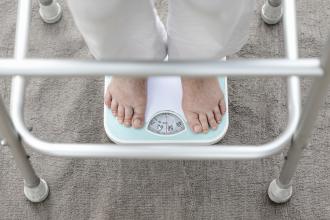Fat and fit?
A recent study suggests that you’re better off being fat and fit than thin and inactive.
If you are anything like me (one of those average people who put on weight in their thirties and forties), once the weight is gained it is very hard to take off. More and more now we hear of the problems of being overweight and obese.
Although we should be paying more attention to central adiposity (i.e., waist circumference) than to BMI, we know how hard it is to lose the weight once it is put on. Attempts at weight loss are dismal and even if we do lose weight it most likely goes back on again. Finally, there is some good news that comes in the form of a study that looked at the association of cardiorespiratory fitness compared with adiposity to mortality in older adults.[1]
An association was found between mortality and adiposity, but when fitness was included the association disappeared. In fact when obese but fit individuals were compared with normal weight unfit individuals, the obese fit people had a lower mortality than those who were unfit and lean. In this study normal weight individuals only had an increased longevity over the obese if they were fit.
How fit does one need to be to meet the requirements of this study, which used a maximal treadmill exercise test as a standard? It has been previously shown that brisk walking for 30 minutes on most days of the week is sufficient to put someone in the fit category. So this is good news for me and for all of us who are overweight or whose waist circumference measurements exceed the recommended levels (men: 102 cm, women: 88 cm).
Also, it is important for even those of normal weight since mortality rates only drop if one is physically active as well. The call goes out for all of us to be physically active. Kudos to those who are at least meeting the mark of 30 minutes of moderate activity most days of the week, and for the rest of us—let’s get moving.
What can we use then to help us in this quest to become more physically active? A systematic review by Bravata and colleagues[2] extols the use of pedometers to increase physical activity and improve health. In this review it was determined that overall, those who used pedometers significantly increased their physical activity—by 26.9% over baseline.
An important predictor of increased activity levels was having a step goal such as 10000 steps per day. It was also noted that pedometer users significantly decreased their BMI by 0.38 and their systolic blood pressure by 3.8 mm Hg. Thus, using a pedometer helps one increase physical activity by the equivalent of 1 mile a day. This is close to moving from the unfit to fit category mentioned above.
The benefits of physical activity are numerous, and with a pedometer there is now a tool to help individuals obtain those benefits. What’s stopping us?
At long last there is an opportunity that will be rolling out this spring through the Provincial Walking Initiative sponsored by the Healthy Living Alliance. This initiative will have physicians playing a key role. We should be involved in promoting physical activity since we are the ones who see the unfit individuals who will most benefit from an increase in activity level no matter what shape they are in or disease they may have.
As part of the initiative, pedometers will be available for us to give to our patients who identify themselves, through a short survey, as being inactive. The pedometer will be given in conjunction with resources that will be available to them through the Active Communities program in their own community. More information about this will be forthcoming shortly, so stay tuned.
As for me, I am relieved that physical activity will continue to be my focus and not those extra pounds I have accrued over the years. So let’s stop barking up the wrong tree. Instead of chasing the scourge of obesity, let’s step out with a pedometer and encourage our patients to do the same.
—Ron Wilson, MD, CCFP
Chair, Athletics and Recreation Committee
References
1. Sui X, LaMonte MJ, Laditka JN, et al. Cardiorespiratory fitness and adiposity as mortality predictors in older adults. JAMA 2007;298:2507-2516.
2. Bravata DM, Smith-Spangler C, Sundaram V, et al. Using pedometers to increase physical activity and improve health: A systematic review. JAMA 2007;298:2296-2304.

